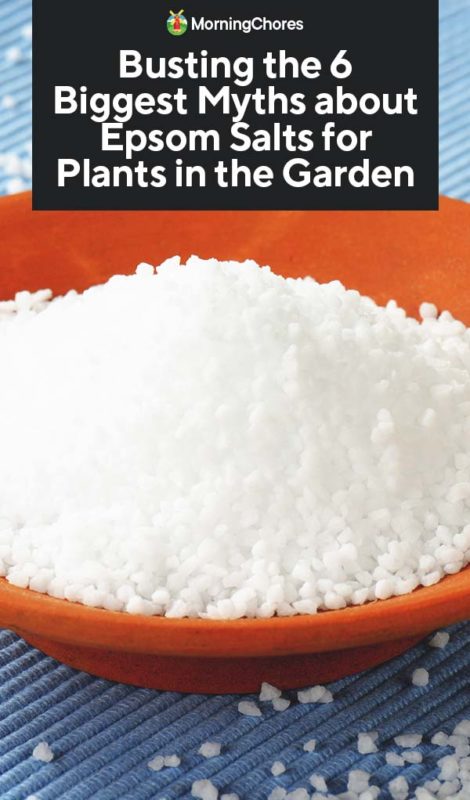Explore Why Some Plants Decline Epsom Salt as a Nutrient Source
In the complex world of plant nourishment, the denial of Epsom salt as a practical nutrient resource by some plants presents a fascinating conundrum. Regardless of its abundant magnesium and sulfur web content, certain plant varieties appear to reject this conveniently available substance. The reasons behind this careful actions look into a complex interaction of plant absorption mechanisms, the unique chemical framework of Epsom salt, and plant-specific nutrient preferences. Understanding these factors might lose light on the mysteries of why some plants pull out of utilizing this apparently valuable nutrient resource.
Plant Absorption Devices
In delving right into the elaborate realm of plant absorption systems, it comes to be noticeable that the process is controlled by an innovative interplay of physical dynamics and molecular pathways. Plants take in nutrients mainly with their origins, making use of different transportation systems to uptake essential elements such as nitrogen, potassium, magnesium, and phosphorus. Magnesium, an essential component in chlorophyll synthesis and enzyme activation, plays a vital role in plant growth and growth.
The absorption of magnesium entails several steps, starting with its accessibility in the dirt option. As soon as liquified, magnesium ions are occupied by plant roots via certain transportation proteins installed in the cell membrane layers. These healthy proteins help with the motion of magnesium throughout the root cell walls and into the plant's vascular system, where it is after that dispersed to various cells to support different physiological features.
Understanding the complex devices behind magnesium absorption in plants loses light on just how this vital nutrient adds to total plant health and productivity. By maximizing magnesium uptake pathways, cultivators can improve crop yields and quality, highlighting the relevance of understanding plant absorption characteristics for sustainable agriculture practices.
Epsom Salt Chemical Framework
The chemical structure of Epsom salt, also known as magnesium sulfate heptahydrate, exposes an unique arrangement of aspects that contribute to its distinct properties and applications. The 7 water molecules are loosely bound to the magnesium sulfate substance, allowing it to dissolve easily in water and be conveniently taken up by plants with their roots.
The crystal framework of Epsom salt creates monoclinic prisms, which are extended crystals with identical ends. This crystal shape influences the physical properties of Epsom salt, such as its texture and solubility. Understanding the chemical framework of Epsom salt is important for understanding its behavior as a nutrient source and its communications with plants in agricultural and horticultural methods.
Plant-Specific Nutrient Preferences
Plants exhibit distinctive choices for specific nutrients, highlighting the significance of comprehending their private requirements for ideal growth and growth. These preferences are determined by numerous factors, consisting of the plant types, phase of growth, ecological conditions, and soil composition. Some plants might flourish in nitrogen-rich dirts, while others require even more phosphorus or potassium for healthy development. Recognizing these plant-specific nutrient choices is vital for maximizing crop yields, improving ornamental plant growth, and advertising total plant health and wellness - what plants don't like epsom salt.

Plant-specific nutrient choices can additionally differ based on whether the plant is a monocot or dicot. By tailoring nutrient supplements to meet the precise needs of each plant species, farmers can maximize plant development, minimize nutrition waste, and assistance lasting agricultural practices.

Soil Ph and Nutrient Uptake
Provided the important function of plant-specific nutrient preferences in maximizing growth and health, comprehending the connection in between dirt pH and nutrient uptake becomes extremely important. Soil pH plays an important role in identifying the accessibility of essential nutrients for go to my blog plant uptake. Various plants have differing pH choices for ideal nutrient absorption. For example, acidic soils with a lower pH are positive for plants like azaleas and blueberries, while alkaline soils with a greater pH match plants such as lilacs and clematis.
On the other hand, alkaline soils might limit the schedule of nutrients like iron, copper, and zinc, impacting plant growth. Maintaining the ideal pH level in the dirt is vital for making sure that plants can successfully uptake the needed nutrients for their healthy growth and productivity.
Genetic Variables in Nutrient Uptake
In the world of plant nutrition, the interaction of genetic aspects dramatically affects the visit this web-site uptake of essential nutrients important for plant growth and advancement. Hereditary factors play an essential duty in forming a plant's capacity to take in and utilize nutrients efficiently. Variants in genes can impact the expression of transportation healthy proteins in charge of moving nutrients throughout cell membrane layers. These transportation proteins, such as networks and providers, are inscribed by particular genetics that can vary amongst plant species or perhaps within the same varieties.
Furthermore, hereditary elements likewise establish the efficiency of nutrient uptake mechanisms within plants. Some plants may possess hereditary attributes that boost their ability to scavenge nutrients from the soil effectively, providing them a competitive advantage in nutrient-poor atmospheres. On the other hand, hereditary variants can additionally result in limitations in nutrient uptake, ensuring plants more prone to deficiencies also when nutrients are bountiful in the dirt.
Understanding how hereditary aspects influence nutrient uptake is essential for creating methods to enhance plant nourishment and enhance crop efficiency in numerous farming settings. By unraveling the genetic systems associated with nutrient uptake, scientists can work towards developing genetically enhanced plant varieties with enhanced vitamins and mineral purchase capabilities.
Conclusion

In the complex globe of plant nutrition, the being rejected of Epsom salt as a viable nutrient source by some plants presents an intriguing dilemma. what plants don't like epsom salt. Understanding these plant-specific nutrient choices is critical for taking full advantage of plant yields, enhancing ornamental plant growth, and promoting total plant wellness
By tailoring nutrient supplements to meet the precise requirements of each plant types, cultivators can maximize plant growth, minimize nutrient waste, and assistance sustainable farming methods.
In the world of plant nourishment, the interaction of genetic variables substantially affects the uptake of necessary nutrients essential for plant development and development. Comprehending these intricacies in plant nutrient uptake is vital for optimizing plant growth and wellness in farming methods.